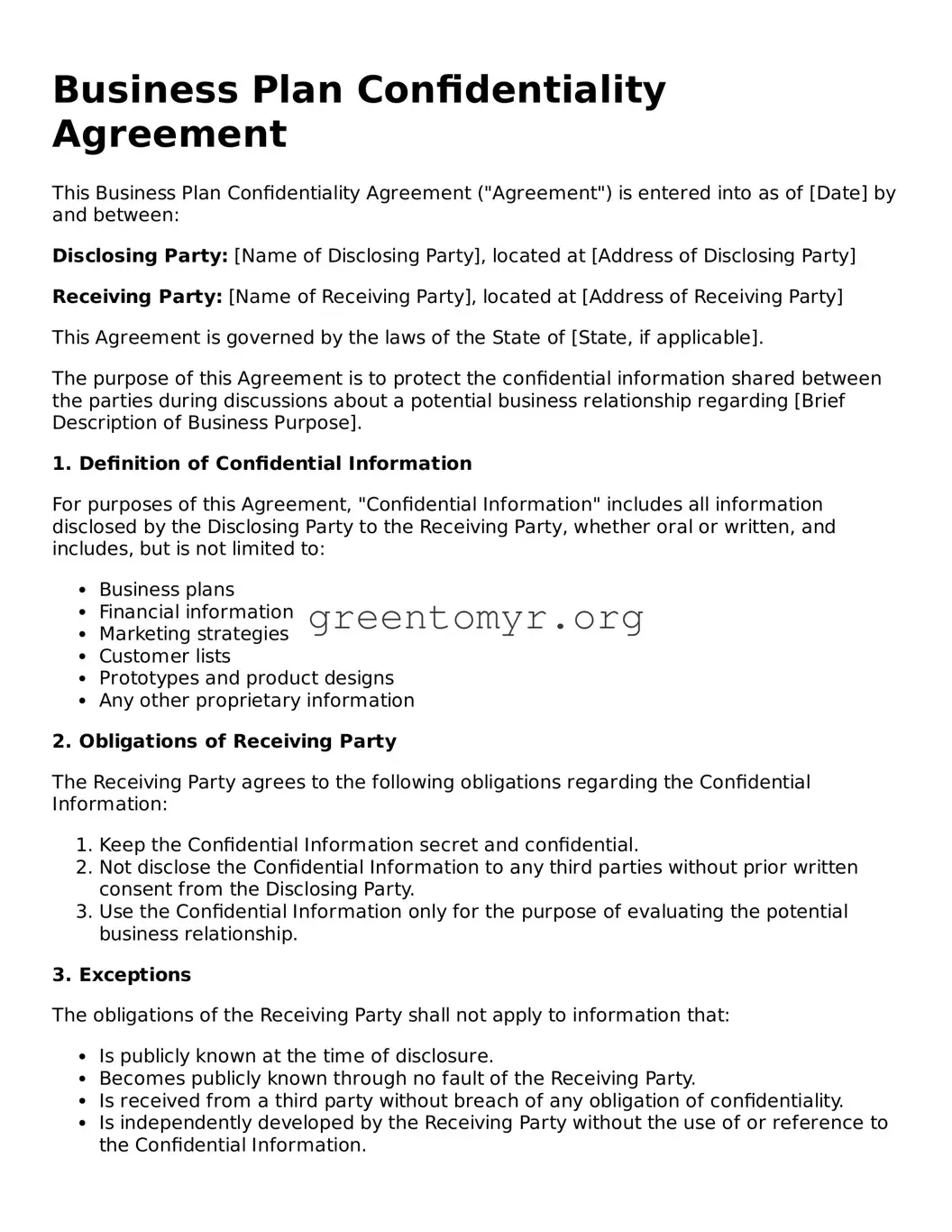Business Plan Confidentiality Agreement
This Business Plan Confidentiality Agreement ("Agreement") is entered into as of [Date] by and between:
Disclosing Party: [Name of Disclosing Party], located at [Address of Disclosing Party]
Receiving Party: [Name of Receiving Party], located at [Address of Receiving Party]
This Agreement is governed by the laws of the State of [State, if applicable].
The purpose of this Agreement is to protect the confidential information shared between the parties during discussions about a potential business relationship regarding [Brief Description of Business Purpose].
1. Definition of Confidential Information
For purposes of this Agreement, "Confidential Information" includes all information disclosed by the Disclosing Party to the Receiving Party, whether oral or written, and includes, but is not limited to:
- Business plans
- Financial information
- Marketing strategies
- Customer lists
- Prototypes and product designs
- Any other proprietary information
2. Obligations of Receiving Party
The Receiving Party agrees to the following obligations regarding the Confidential Information:
- Keep the Confidential Information secret and confidential.
- Not disclose the Confidential Information to any third parties without prior written consent from the Disclosing Party.
- Use the Confidential Information only for the purpose of evaluating the potential business relationship.
3. Exceptions
The obligations of the Receiving Party shall not apply to information that:
- Is publicly known at the time of disclosure.
- Becomes publicly known through no fault of the Receiving Party.
- Is received from a third party without breach of any obligation of confidentiality.
- Is independently developed by the Receiving Party without the use of or reference to the Confidential Information.
4. Return of Materials
Upon termination of discussions or upon the request of the Disclosing Party, the Receiving Party agrees to return or destroy all materials containing Confidential Information.
5. Duration
This Agreement shall commence on the date first written above and shall remain in effect for a period of [Length of Time] years unless terminated by either party with [Number of Days] days written notice.
6. No License
This Agreement does not grant the Receiving Party any rights to use the Disclosing Party's Confidential Information other than as specifically permitted herein.
7. Governing Law
This Agreement shall be construed in accordance with the laws of the State of [State, if applicable], without regard to its conflicts of law principles.
IN WITNESS WHEREOF, the parties have executed this Agreement as of the date first above written.
Disclosing Party Signature: _________________________ Date: ________________
Receiving Party Signature: _________________________ Date: ________________
